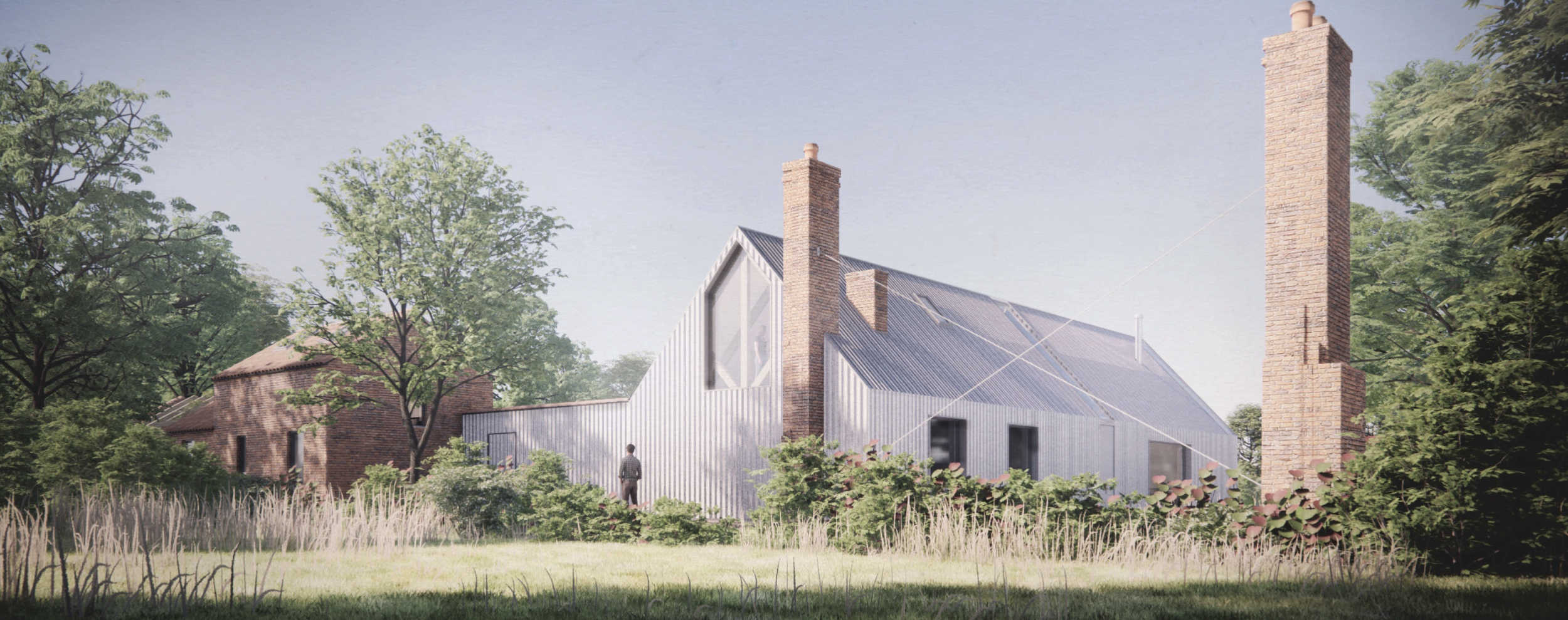Behind the scenes with DOM’s founder, Marta Nowicka
Marta Nowicka is an Interior Architect with a passion for turning commercial properties into beautiful homes. Having an ever-growing property portfolio led to the creation of DOM: a collection of stunning houses in the UK and all over Europe that invites people to experience great design differently, to live in it. But what was the journey that led her there?
In a very special interview for International Women’s Day, we invite you behind the scenes with DOM’s founder Marta Nowicka, to discuss the history of the brand as well as her vision of the future:
Hi Marta! Thank you for meeting with us. Since it's International Women’s Day today, could you please tell us how you connect to the women in your family?
I come from a line of remarkable, strong women and their stories always inspire me. My mother experienced the devastation of WWII firsthand in Warsaw. It was like those scenes in Polanski’s The Pianist, where he’s digging in piles of rubble, searching for something to eat.
However, her family managed to survive in the basement of their bombed-out home thanks to my resourceful grandmother. She was a pioneering woman of her time, a second-generation professional woman in her family, and taught in a girls' school in Warsaw. Her mother, my great-grandmother, also worked in a Polish bank before the war doing accountancy and had a career as a banker!
Needless to say, it’s always been part of the family culture that as a woman you study, have a vocation, and never rely on a man to provide.
As refugees, both of my parents had to work hard but also lived their lives to the fullest. My father started his own architectural practice and my mother had her own fashion boutique which was extremely popular amongst the 60’s jet set.
What was the journey that led you to Interior Architecture?
After my parents divorced, my mother started flipping houses to make extra money. She would buy a ruin, we'd move in to renovate and before the paint would dry, she’d sell it. We moved about 11 times by the time I was 16 - so living on a building site became normal.
Then, I worked for my father for a year and he taught me how to draw. I would go on sites with him which was such a great time, so I realized I wanted to be an architect. When I went to Kingston to start my degree in Interior Architecture, I knew I had found my tribe - it felt like coming home.
I was lucky to get a job with my Head of Programme, Robert Lee, right after graduating. Officially, I left Kingston on Friday and started work on Monday. It was hard work, but I learned so much.
Have you ever felt that you were treated differently as a young woman in the industry, especially on construction sites or other spaces that are traditionally hypermasculine environments?
It was the norm to be the only woman in meetings, so you quickly had to get used to it. The one distinctly bad experience was when we were redesigning the all-male Exeter Prison. While doing research, the warden used my site visit to tease the inmates - it was quite shocking! However, I ended up meeting inmates and staff and worked toward creating tangible improvements and humanizing the environment, which perhaps a male colleague wouldn't have been so interested in doing.
How did you end up starting your own company?
In 1992 we had arrived at a major recession and the company was struggling, so I took a voluntary redundancy to start my own practice while also going into teaching in Birmingham. A year later, fate led me to meet my business partner. I popped into his office and he asked if I could help with a presentation, which ended up going great. We quickly understood that it was a good pairing. Our skills were different but complementary and that’s a good business marriage.
Around the same time, I used all my savings and bought a fabulous property in Archway at half price - it was a repossession. I thought this could be my blue sky project! The freedom of not having a client felt liberating. I gutted it and refurbished it from a two-bedroom flat into one big loft space. I started understanding property values, budgets, and the monetary value that is achieved with great design. That was the beginning of my journey as a developer.
Eventually, I sold Nowicka Stern to my business partner to go solo as a designer and a developer. So for about 22 years, I’ve been balancing being an interior architect, a businesswoman, a mother, and a landlord/holiday letter.
There seems to be a pattern in your process of designing a property - you either live there or stay close by while doing the remodeling. Does that create a personal connection to the properties in your portfolio?
Absolutely, I get emotionally involved! So it became my business model that I would refinance a property to design the next one. Most developers sell and in a way, that affects the quality of the design because they don't experience it. I like to keep this almost utilitarian aesthetic because I remodel commercial buildings and their heritage is important in my process. Everything has to be well executed and specified. It's design that lasts.
I never had anything from my past, so for me, that is my heritage. I didn’t see my parent’s houses because they were bombed and even in England, they sold them. Since everything changed all the time I kind of wanted to create that stability for myself and my son.
That’s a great approach to design. To close things off with a strong message for our readers, is there something you’d like to say to other women out there that you wish you’d heard at the beginning of your career?
To push through the fear! As a woman, I thought men would roll their eyes if I asked many questions, but you have to overcome the discomfort and get the information you need. When we’re younger we tend to be less afraid regardless, party due to ambition and sometimes naiveté, so you just have to go after the things you want in life.
Don't be afraid to get advice and create a great team around you because we need to rely on others to grow. Use your energy to create what you want for yourself.






